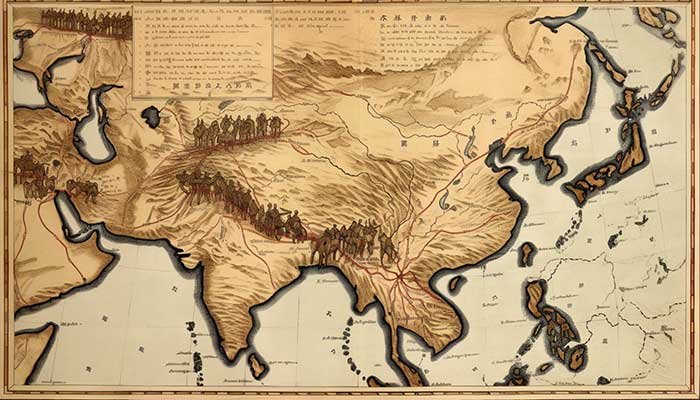
The Silk Road
A vast network of trade routes stretched from the plains of China to the bazaars of Constantinople. Known collectively as the Silk Road, these pathways were more than conduits for commerce—they were arteries of culture, ideas, and innovation, linking East and West for centuries.
Emerging around the 2nd century BCE, the Silk Road took its name from the lucrative Chinese silk trade, a key driver of its expansion. Yet, it facilitated more than material exchange. Along these routes, Buddhism spread from India to China, while the Islamic world introduced astronomical and mathematical advancements to the East. Philosophies, technologies, languages, and even diseases travelled these paths, shaping civilisations and destinies. To safeguard valuable knowledge, traders and officials employed various secrecy measures, from cryptographic methods like the scytale cipher to the enforced protection of sericulture techniques in China. This tradition of encoded communication and hidden knowledge finds echoes in The Vitruem, used by Father Bruni.
Though the Silk Road’s importance declined with the rise of maritime trade, its legacy endures. Our modern globalised world—where cultures intermingle and ideas spread rapidly—owes much to these ancient networks.
Further reading: The Silk Road


